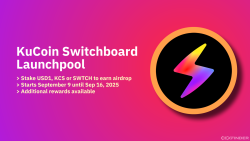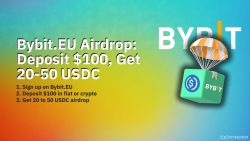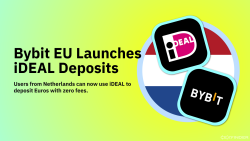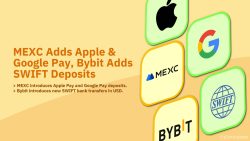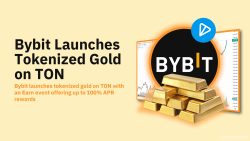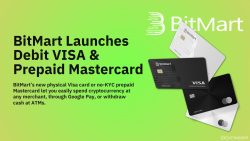To buy cryptocurrency for the first time, it’s always wise to carefully consider payment methods. There are multiple ways to convert fiat (local currency like USD, EUR, HKD, etc.) to crypto, and each method has different fees, availability and transaction times.
Buying Crypto with Bank Cards
Nearly all exchanges with fiat deposits capability accept Visa and Mastercard. Transacting with bank cards is not much different than completing any other online purchase or payment: you simply punch in your card number, CVC, expiration date, and that’s usually it. In case your bank or processor requires additional confirmation or verification for processing transactions, it will be required as well.
Card purchase fees on crypto exchanges are typically between 2% and 4%. Exact fees vary depending on each individual exchange. To view exact fees on all exchanges with card deposits listed by Cexfinder, you can expand the button below.
For info & filtering see: How to buy crypto with bank cards.
In most cases, card transactions are processed immediately, and funds will be available on your crypto exchange wallet instantly or within a few minutes. When making your first fiat transaction, many exchanges will put a temporary freeze on your funds for 24-48 hours. This is an anti-fraud measure, but you will be able to buy, sell and trade crypto during the lock. You will only be briefly locked from making a withdrawal.
Other Bank Cards
Note that we specifically mentioned Visa and Mastercard. It’s very difficult to find exchanges or payment gateways that will accept American Express, Diners, Maestro, JCB, or other cards. If you need to use Diners, Discover or JCB, consider depositing fiat through Skrill. For Discover or Maestro, you can deposit through Neteller.
But when using third party gateways or payment services, watch out for fees. For example, card deposits through Neteller are 2.5%, and Neteller deposits on CEX.io are 4%, meaning you might pay a total of 6.5% in fees. Using Visa or Mastercard directly on crypto exchanges without intermediaries is much cheaper.
Buying Crypto with Bank Transfers
Bank transfers are usually by far the cheapest fiat deposit method. But depending on your country or banking capabilities, availability may vary.
To settle transactions, banks in different countries use different methods. In United Kingdom, most banks use Faster Payments. In the United States, ACH is typically used, whereas Canada uses Interac. SEPA is how banks clear funds in European Union. Each of these methods uses a specific currency, such as British pounds (GBP), US dollars (USD), Canadian dollar (CAD), or Euros (EUR).
For international transactions, banks use SWIFT. Through SWIFT payments, banks can send funds to other banks across the world. Downside to SWIFT transactions are fees, which are often a “flat” amount such as $25, plus potentially a percentage of the entire amount (depends on your bank!). For large transactions, the fees through SWIFT payments can really add up. On the plus side, SWIFT can (potentially) be used to send or receive payments in almost any currency.
On Cexfinder, you can see exchanges with the following bank transfer methods (expand to view list):
For info & filtering see: How to buy crypto with bank transfers.
Keep in mind that your banks may charge additional transfer fees that are not listed here. We only list fees charged by crypto exchanges (recipients).
Additional local banks transfers are available in many countries, but are not always listed on our exchange reviews. For example, our country guides for Argentina, South Africa, Indonesia, India, Thailand, and many other countries include specific mentions of exchanges supporting local bank transfers.
Buying Crypto with Mobile Payments
Mobile payment apps such as Apple Pay, Google Pay or Samsung Pay are growing increasingly more popular each day. They offer a convenient, secure and fast payment method to any smartphone user.
Fees on Google, Apple and Samsung Pay are typically close to debit card fees. In short, you can expect to pay between 2% and 4%, similar to card payments. To view exact fees per exchange, see below.
For info & filtering see: Google Pay, Apple Pay, Samsung Pay pages.
Compared to bank cards, fewer cryptocurrency platforms accept mobile payments. Samsung Pay is especially rare, and no exchanges currently support Garmin Pay.
Buying Crypto With Digital Wallets
PayPal doesn’t need an introduction. Similar online payment services such as Neteller, Skrill, ZEN, or neobanks like Revolut are also frequently used for a variety of transactions. Some of these payment services can be used to buy crypto without the need for crypto exchanges, but their insanely high fees can make investing feel like a ripoff. It’s almost always better to send fiat funds directly to crypto exchanges without relying on these services.
For info & filtering see: PayPal, Neteller, Skrill, Revolut, ZEN pages.
There aren’t too many crypto exchanges accepting these alternative payment methods. This is mostly because these traditional payment services don’t always like dealing with digital assets. Or, some services simply prefer customers trading on their own platforms where fees are high.
Quick fees explanation: Revolut, Neteller and Skrill will charge you 2.50% card deposit fee, then a 1.50% fee per crypto trade. As if that wasn’t enough, a 2% fee is charged if making a crypto withdrawal to other platforms or wallets. Compared to regular crypto exchanges, these fees are crazy high. Most CEXs will only charge 0.10% to 0.20% for crypto Spot trading, and crypto withdrawals under $1 per transaction are easily available.
But you can still use your funds from various digital payment services, and avoid their high fees. Simply use these services to deposit fiat, and then buy and trade cryptocurrency on CEXs. Users with money sitting on e-wallets can find at least one great exchange to deposit funds to.
Other Fiat Deposit Methods
In some countries, international or even domestic banking isn’t always easy. All the deposit methods listed above are directly supported by mentioned crypto exchanges, meaning any funds sent through those methods will be transferred directly onto the exchange wallet without intermediaries. For lots of exchanges, maintaining support for dozen or more different payment channels can be a huge drain on resources. For this, several solutions are available.
1. 3rd Party Payment Gateways
3rd party payment gateways are separate companies specializing in accepting as many local payment methods as possible, and converting fiat into crypto (or vice versa). These payment gateways often feature seamless integration onto crypto trading platforms, and you can use them to make easy payments that are forwarded directly onto the exchange.
These gateways include companies such as AlchemyPay, BANXA, Mercuryo, MoonPay, and many others. The biggest downside are fees. As these are 3rd party intermediaries, they are inevitably taking a bite out of each transaction. In essence, this means the fees for purchasing crypto via gateways often costs more than 4% per transaction, sometimes climbing up to 6% or 8%.
On the plus side, some gateways integrated tons of local payment methods such as QR payments, mobile apps, or local bank transfers specific to certain countries. When traditional payment methods are unavailable, gateways can provide secure alternative means of depositing local currency to buy crypto.
2. P2P Markets
Peer-to-peer (P2P) basically means you are directly buying fiat or crypto from another individual user on the platform. Don’t worry about getting scammed: most crypto exchanges with active P2P marketplaces have verified sellers with 1,000+ successful transactions, so the chances of something going wrong are minimal. Plus, there’s all kinds of user protection in place to ensure you receive your funds.
Our P2P trading tag has a list of all major cryptocurrency exchanges with P2P marketplaces. Alternatively, the list below contains five biggest exchanges with P2P markets:
Anyone can become a seller or a buyer on P2P markets. Because of this, large markets have thousands of sellers covering every country and practically any payment method you can think of. If a payment channel exists, you will find someone willing to transact with it.
Of course, there is a downside. Each individual seller can set their own conversion rates or prices. The fees will be fair with most payment methods, often between 2% and 5%. But with very fringe and unpopular payment method, you may be looking at transaction costs up to 15%.
What’s the Best Fiat Payment Method?
The best method entirely depends on you. Do you have a bank account? Are you in a country where buying crypto is legal? Do you need funds instantly or can you wait a day or two?
- Generally speaking, bank transfers are cheapest fiat deposit method, sometimes even with zero fees charged. Transactions can be instant, but with some banks or currencies the transactions can also take up to 3 days to clear.
- Card payments are most convenient. Your funds will clear instantly, and on many exchanges the fees are acceptably low at just 2%.
All other methods depend on specific circumstances. If your local bank account is empty but your PayPal account is loaded, your preferences and priorities may be different.
In any case, we hope our fiat deposits guide explained both popular and less popular deposit options, and helps you make a smart decision. Since you decided to invest into crypto, you’re already half-way there!


